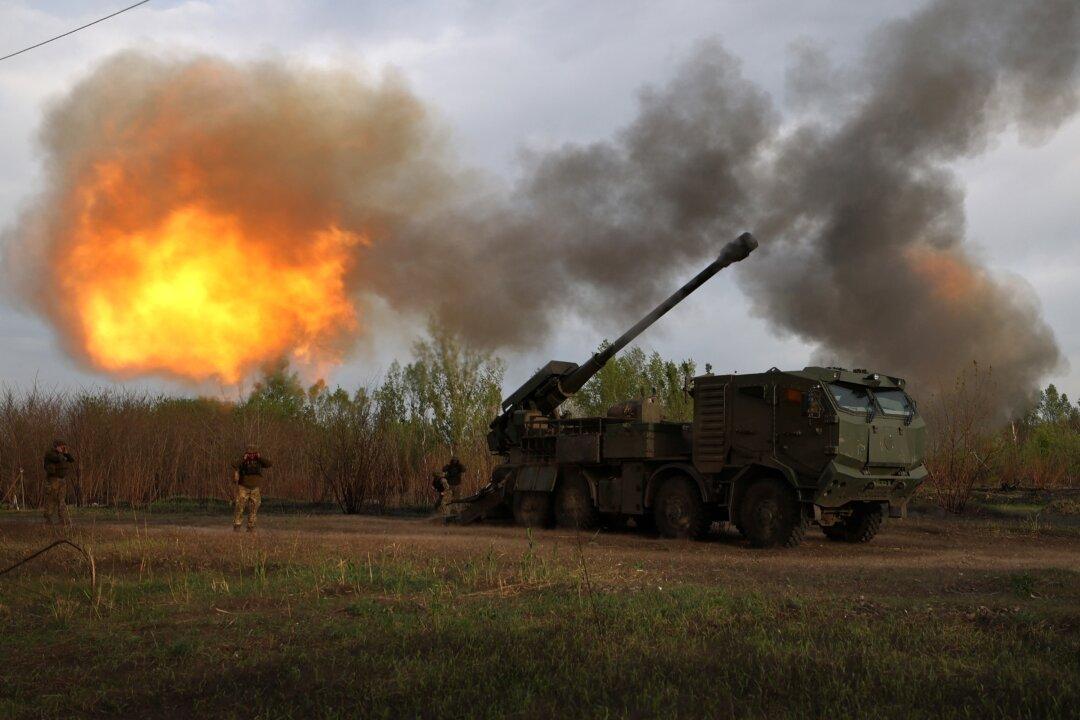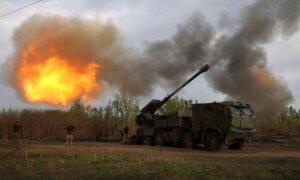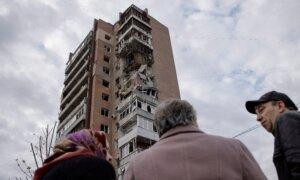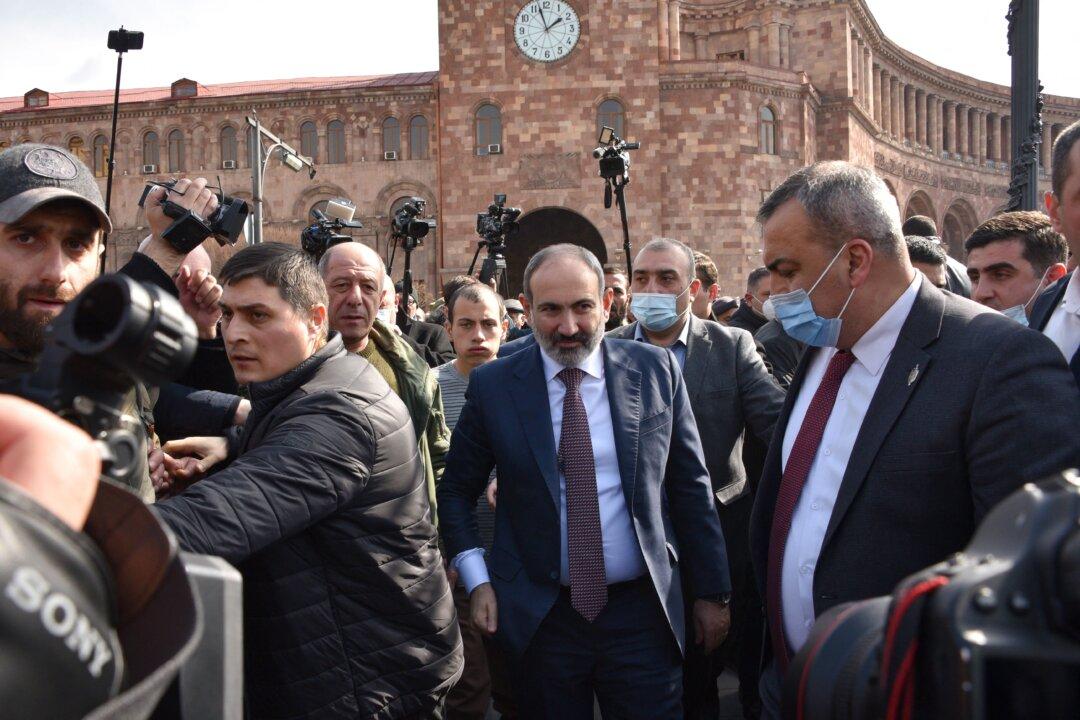Russian troops pushed deeper into the Kharkiv region this week in an effort to grind down Ukrainian forces deployed in the area, according to Oleh Syniehubov, the regional governor.
“The enemy is trying to deliberately stretch [the frontline], attacking in small groups, but in new directions,” he said in broadcast remarks on May 13.
Russian forces are now honing in on Kharkiv’s town of Vovchansk, which sits only three miles from the Russian border, according to Mr. Syniehubov.
The regional governor went on to describe the battlefield situation as “difficult.”
In a statement, Vovchansk’s Kyiv-appointed military administration said Russian forces were now assuming positions on the town’s outskirts.
Over the weekend, Russia’s Defense Ministry claimed that its forces had captured nine villages in eastern Kharkiv.
On May 14, Moscow stated that a 10th village—Bugrovatka, to the west of Vovchansk—had also been taken after several days of fighting.
“Units of [Russia’s] Battlegroup North have liberated the settlement of Bugrovatka ... and penetrated the enemy’s defense lines,” the Russian Defense Ministry said in a statement.
The Epoch Times could not independently verify the Russian claims.
Soon after Moscow’s initial invasion in early 2022, Russian forces overran broad swathes of eastern Kharkiv, including Kupiansk, the regional capital.
But they withdrew several months later, leaving advancing Ukrainian forces in control of the region except for small pockets east of the Oskil River.
At the time, Moscow described the move as a “strategic withdrawal,” while Kyiv and its Western allies portrayed it as a humiliating Russian “retreat.”
In the 18 months since, Russian forces have focused mainly on the eastern front, where they continue to register incremental—but strategically significant—gains.

Last week, Russian forces returned to Kharkiv, effectively opening a new front in northeastern Ukraine.
Speaking to reporters on May 10, U.S. National Security Council spokesman John Kirby confirmed the renewed Russian offensive in Kharkiv.
“We have been anticipating that Russia would launch an offensive against Kharkiv, which appears now to have begun,” he said.
“We’ve been coordinating closely with Ukraine to help them prepare.”
Soon after the offensive began, Kyiv appointed Brig. Gen. Mykhailo Drapatyi to take over command of the Kharkiv front.
Kyiv and its allies fear that Moscow’s latest push on Kharkiv could draw Ukrainian troops from the eastern front, where they already face numerically superior Russian forces.
According to Ukrainian President Volodymyr Zelenskyy, reinforcements are being rushed to frontline areas of Kharkiv, including the beleaguered town of Vovchansk.
In a May 13 video address, he said the Ukrainian military was fully aware of “how the enemy operates and ... the intention [by Russia] to divert our forces.”
Notably, Kharkiv shares a lengthy border with Russia’s western Belgorod region.
In recent months, Ukrainian forces have staged frequent artillery attacks on civilian targets in Belgorod, drawing dire warnings from Moscow.
On May 12, a Ukrainian artillery shell—presumably fired from Kharkiv—struck a 10-story building in Belgorod, killing 17 people, according to Russian officials.
“The Belgorod region comes under regular fire from Kharkiv,” Viktor Vodolatsky, a Russian lawmaker from the Moscow-recognized Luhansk People’s Republic, told Russia’s TASS news agency on May 14.
“That’s why it’s important for Russian forces to advance [into Kharkiv] as quickly as possible.”

Patriots Wanted
Kharkiv, too, remains subject to frequent airstrikes and artillery attacks by Russia.On May 14, at least four people were injured by a Russian artillery strike near Kharkiv’s regional capital, according to local officials.
In a social media post, Mr. Sinehubov claimed that Russia was using Soviet-era guided munitions to strike targets in and around Kharkiv city.
On the same day, U.S. Secretary of State Antony Blinken visited Kyiv, where he met with Mr. Zelenskyy.
Mr. Blinken stressed Washington’s continued support, claiming that U.S. weapons delivered to Ukraine would “make a real difference ... on the battlefield.”
Mr. Zelenskyy, for his part, used the occasion to request two additional Patriot missile systems for deployment in the flashpoint Kharkiv region.
“Because the people there are under attack,” he said. “Civilians, warriors, everybody—they are under Russian missiles.”
Soon after Mr. Blinken’s arrival, Kyrylo Budanov, head of Ukraine’s military intelligence apparatus, claimed that the situation in Kharkiv had stabilized.
“As of yesterday evening, a rapid trend towards stabilization ... had emerged,” he said in televised comments.
“The enemy is—in principle—already blocked at the lines that it was able to reach.”
Nevertheless, he went on to concede that the “active phase” of Russia’s offensive in Kharkiv was “still underway.”





